Yi's Costumes, Adornments Gorgeous as Flowers
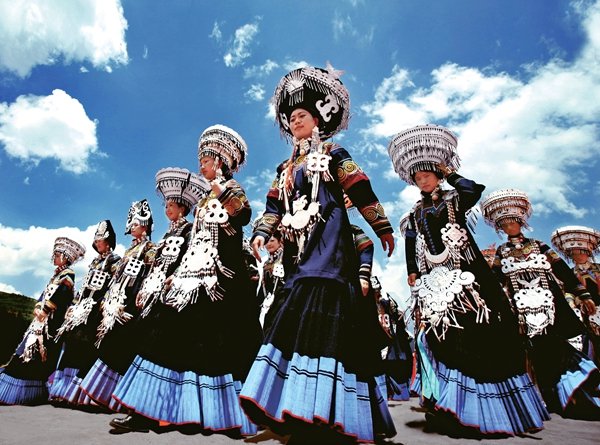
The Yi ethnic group boasts a long history and splendid culture. The Yi people live in the belt between plateaus and coastal hills in Guangxi Zhuang Autonomous Region, and Yunnan, Sichuan and Guizhou provinces. The Yis' costumes and adornments, which are as gorgeous as flowers, embody the ethnic group's traditional cultural elements. In 2014, China added the Yis' costumes and adornments to the list of the country's items of intangible cultural heritage.
If you visit Liangshan Yi Autonomous Prefecture, in Southwest China's Sichuan Province, you will no doubt be impressed by the region's picturesque view. The enchanting, gorgeous costumes and adornments add beauty to the Yis, who become part of the beautiful view in their hometown.
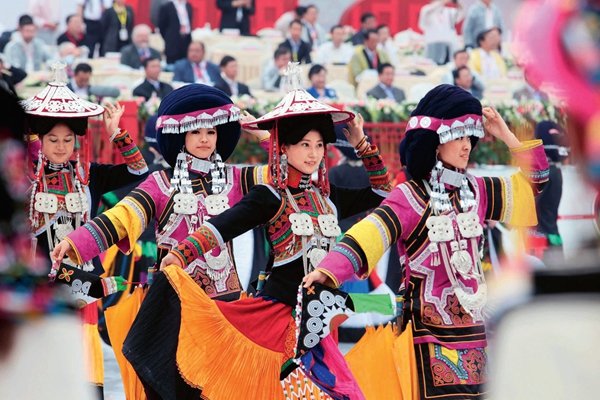
The Yis' costumes are rich in colors and styles, and the people like to use silver ornaments and the Yi-style embroideries as decorations. The styles of the Yis' costumes vary from place to place. The costumes in the prefecture are the most representative. Yi men's clothes are simple and elegant, whereas Yi women's dresses are colorful and exquisite. In addition, the Yis' costumes differ depending on gender, age, identity, occasion and other factors. In general, young people prefer bright-colored clothes, while the elderly care more about clothes' comfortableness.
Yi men keep a lock of hair on their heads, which is called the "Buddha's Lock." The ancient tradition symbolizes men's dignity and holiness. The headdress for a Yi man is called a "hero knot," which is a 20- to 30-centimeter-long column-like bundle, wrapped with a dark blue or black cloth around the head. The bundle usually points diagonally towards the sky. "Hero knot" represents Yi man's unyielding spirit. The shape of the knot varies by age.
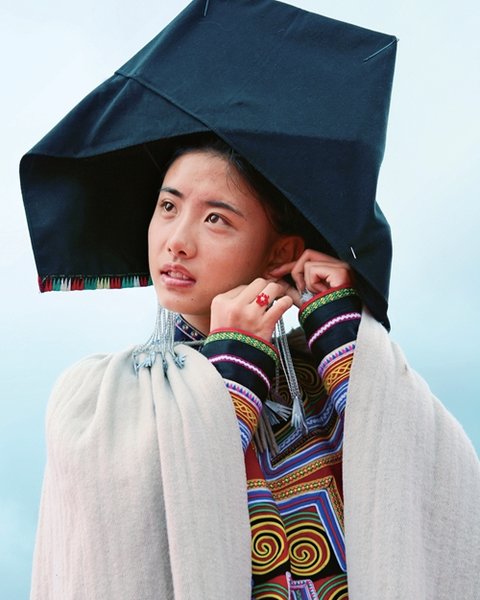
Young, unmarried Yi women wear tile-shaped headdresses made from blue cloth. The women fix the headdresses with braids and red cords, and decorate them with hairpins and combs. Married Yi women wear black "lotus leaf hats," also known as the "big eagle hats."
The traditional costumes of the Yis in Liangshan are mainly made from woolen and linen fabrics, dyed in black, red, and yellow. The commonly used techniques for making clothes include embroidering and inlaying various patterns (in the clothes), such as plants, curved blades and sheep's horns. Both Yi men and women like to wear mantles, which are called "cha'erwa." The items are made of white, gray and/or green wool. Some mantles have fringes. The mantles are decorated by a variety of patterns, including checks, twills, ripples and pumpkin seeds.

The Yis in the prefecture, who speak different dialects, wear different styles of costumes. The Yis' clothing styles fall into the following three categories according to their dialects: The Yinuo dialect clothing area, represented by Meigu County, characterized by men's wide-leg trousers; the Shizha dialect clothing area, represented by Xide County, characterized by men's trousers with medium-width legs; and the Suodi dialect clothing area, represented by Butuo County, characterized by men's narrower-leg trousers. All of the above-mentioned counties are in the prefecture.
Men in the Yinuo dialect clothing area usually wear simple clothes. Many men wear blue headdresses. Their collarless tops are often embroidered with a variety of exquisite patterns, and their trousers have wide legs, bound with leggings. A man (in the area) usually wears a dagger at the waist (to cut woods and/or protect himself against wild animals), and hangs a musk bag over the chest (to ward off evil spirits and prevent calamities). Children often wear hats embroidered with various patterns, including tigers and other animals. Many children wear copper bracelets to ward off evil spirits. One may guess a woman's age by observing her clothes. A young woman usually wears a tight, attractive top and a bright-colored pleated skirt. Her skirt belt is adorned with a purse featuring exquisite patterns and fringes. The woman wears a blue or black headdress. A middle-aged or elderly woman usually wears simple clothes in darker colors.
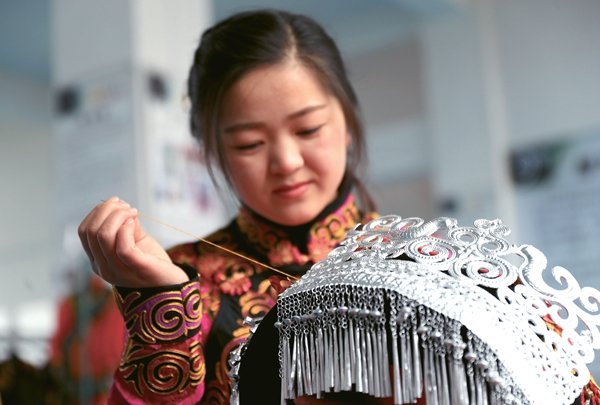
People of the Shizha dialect clothing area mostly wear white, black, and blue cha'erwa. A young man wears a shirt, a waistcoat and a collarless coat. The coat, made in a simple style, has snug-fitting sleeves, decorated with colored cloth around the shoulders, lapel and hem. A middle-aged or elderly man usually wears a loose-fitting coat with no decoration, and a pair of pants, whose legs are tighter than that of a pair of trousers worn by a man of the Yinuo dialect clothing area. The coat of a young woman (in the Shizha dialect clothing area) features snug-fitting sleeves, decorated with snow-white cony hair. The woman's headdress is light and delicate, embroidered with exquisite patterns.
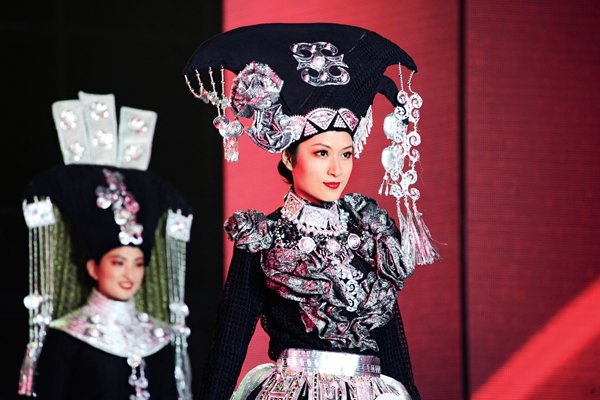
The men's wear in the Suodi dialect clothing area is mostly made of black cloth. A man's top is tight and short, which often exposes the navel. The top is inlaid with long rows of silver buttons, and the hems are inlaid with yellow and red strips for decoration. A man's trousers are characterized by a loose-fitting waist and narrow bottoms of the trousers' legs. A woman (in the area) usually wears a woolen skirt and a smock, decorated with traditional rippling patterns. She also wears a yak felt hat or a navy blue head-handkerchief with laces.
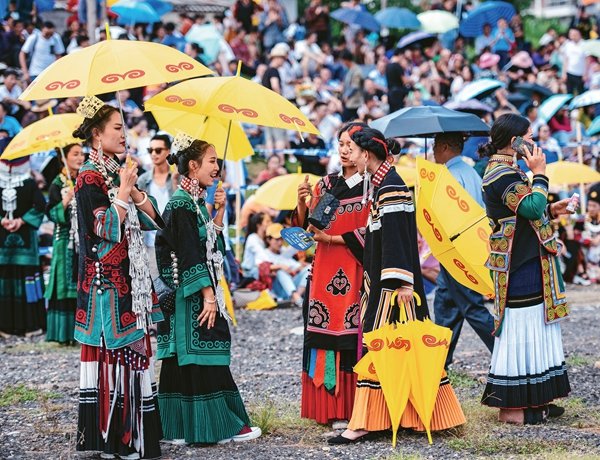
The Yis' adornments vary in every dialect area (in the prefecture). Yi men's earrings are usually made of three honey wax beads or agate beads in red alternating with yellow. Some earrings are decorated with black tassels. Silver earrings are also common adornments for men. Yi women wear jewelry made from gold, silver, coral, jade or other materials. They particularly value neck jewelry, mostly made from silver. Children often wear silver, copper or wood locks around their necks, which are believed to help the wearers avert calamities and ward off evil spirits. Men like to wear daggers or waist knives. They also wear swords on important occasions, such as sacrificial rituals.
Through the Yis' colorful costumes, one may get a glimpse of the people's aesthetic psychology and traditional customs, which are part of the treasures of the traditional Chinese culture.
Photos from VCG and Tuchong
Source: China Today
(Women of China English Monthly December 2023)
Please understand that womenofchina.cn,a non-profit, information-communication website, cannot reach every writer before using articles and images. For copyright issues, please contact us by emailing: website@womenofchina.cn. The articles published and opinions expressed on this website represent the opinions of writers and are not necessarily shared by womenofchina.cn.








.jpg)

 WeChat
WeChat Weibo
Weibo 京公网安备 11010102004314号
京公网安备 11010102004314号